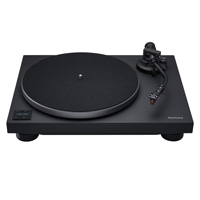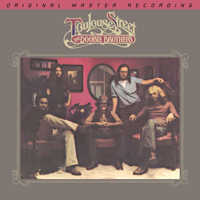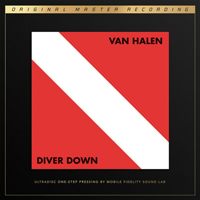Sometimes It Snows in April
There is nothing like waking up in April to a few inches of snow on the ground just after a string of beautiful, warm days. Everything is blanketed in white powder. Many of you might think freshly fallen snow can be quite beautiful, but for me, with springtime upon us, it's like a dagger to my heart. Especially now, with being in stuck inside for the last month, and plants and trees starting to blossom. In January, yes, I expect snow. I actually don't even mind shoveling it. But mid-April should be time for sunshine and rebirth. I guess I'm just not a fan of spring snow. But today's contribution is written by a man who loves snow. He probably woke up with a great big smile on his face.
Four hours have passed, the sun has peaked out, and the snow is melting away. So I may have overreacted. I was a little too hasty with my negative reaction to the overnight flurries. Also, I could use have employed some patience, which has never been one of my strong points. I'm going to backtrack a bit and say the snow wasn't so bad after all. I didn't even have to go outside to shovel the sidewalks, which are too warm for the snow to stick. I apologize for complaining, as I have made many pleas here for understanding and positivity. Thank you all for helping me see the error of my ways. Is it possible I could learn something from this? They say anything is possible. :)
Today's Special Guest Contribution: Izzy Stradlin and the Ju Ju Hounds Izzy Stradlin and the Ju Ju Hounds
By Bob Gendron, Music Direct Director of Communications/Music Critic/Editor/Chionophile
The first signs Izzy Stradlin's tenure with Guns N' Roses were nearing an end could be seen in 1991 during the summer legs of the band's mammoth Use Your Illusion tour. Onstage, the rhythm guitarist clung to the shadows, his reserved behavior a contrast to the group's extroverted personalities and active physical presence. By the time the sextet filmed the video for its second single ("Don't Cry") off its mega-selling twin-album release, Stradlin was nowhere to be found. By early November, word became official: The cofounding member had departed.
Extricated of the stresses and spectacles associated with GNR, Stradlin retreated to his native state of Indiana. He soon recruited a stylistically likeminded crew – lead guitarist Rick Richards (Georgia Satellites), bassist Jimmy Ashhurst, and ace drummer Charlie Quintana (Social Distortion, Bob Dylan) – to comprise a backing band dubbed the Ju Ju Hounds. Together, along with invaluable contributions on many tracks from legendary keyboardist Ian McLagan on the Hammond B3, the quartet collaborated on one album – a self-titled 1992 affair whose timeless sound, solid production, and fat-free concision makes it seem as if it could've come out today or decades earlier.
Indeed, the puzzling cover art remains the only misstep of an album steeped in lean, raw rock n' roll and etched with blues, country, gospel, and reggae colors. While Stradlin would go on to record numerous low-key solo efforts, Izzy Stradlin and the Ju Ju Hounds retains a unique chemistry, charm, and consistency. Throughout, relief and freedom – sensations that Stradlin doubtlessly felt at the time – spring to the surface. Many songs sigh and exhale. Absent any agenda or attempt to fit in with the era's prevailing tastes – "alt-rock" dominated mainstream airwaves and the public's attention – the deceptively simple music is both liberated and liberating. Just the sort of fare to play during an outdoor gathering, back-porch hootenanny, or shelter-in-place evening.
Nodding to the bare-bones rawness, raucous swagger, and organic soulfulness of the Faces and Exile on Main St.-era Rolling Stones, as well as the grit of classic urban blues, yet retaining a contemporary vibe that steers clear of retro-chasing nostalgia, it rides on the strengths of Stradlin's songwriting, effortless rhythms, gruff nicotine-flecked vocals, and natural interplay with his bandmates. A pair of well-executed covers – Toots and the Maytals' "Pressure Drop" and Ronnie Wood's "Take a Look at the Guy' – accompany nine originals, a handful of which (the feverish "Bucket O' Trouble," the Southern-throated and slide-guitar-driven "Train Tracks") suggest the attack of his former outfit.
Yet a majority of the record inhales with deep breaths, its moves at once flexible and taut, with songs afforded the time and patience to unfurl, pause, reflect, grip, echo, simmer, and stretch. Thanks to the open, straightforward production, you can practically trace the arrangements' grooves and ridges as crafty hooks unfold in the background. Flinty, acoustic-based roots instruments give the pensive "Time Gone By" a comforting aura. The fireplace warmth of the quizzical "How Will It Go" inspires reflection and resilience. "Come on Now Inside," elevated by the piano playing of session pro Nicky Hopkins, dissolves tension as it progresses and emerges as an optimism-streaked plea – replete with deep-gospel backup singing – that could drift on without ever growing stale. The latter traits also apply to the remarkable "Shuffle It All," a clinic in the art of tempo balance, descriptive lyrics, and build-and-release tension.
In addition to a lengthy club tour during which the quartet sprinkled performances with spirited covers of Bo Diddley's "Pills," Howlin' Wolf's "Highway 49," and the never-released early GNR rave-up "Goodnight Tonight," the album earned Stradlin and company a prize slot opening for one of his heroes, Keith Richards, in Los Angeles. At the time, Richards had recently issued his own solo effort, Main Offender. The latter and Izzy Stradlin and the Ju Ju Hounds are the albums the Stones have tried in vain to make for the past 35-plus years.
Izzy Stradlin and the Ju Ju Hounds has been available on several import vinyl LP pressings, but the Geffen CD – issued before the advent of the "loudness wars" – sounds extremely good. Listen to Ashhurst's bass lines on any track – particularly "Shuffle It All" – or McLagan's organ swells, and vicariously enter the studios of Chicago Recording Company.
16th Apr 2020



































